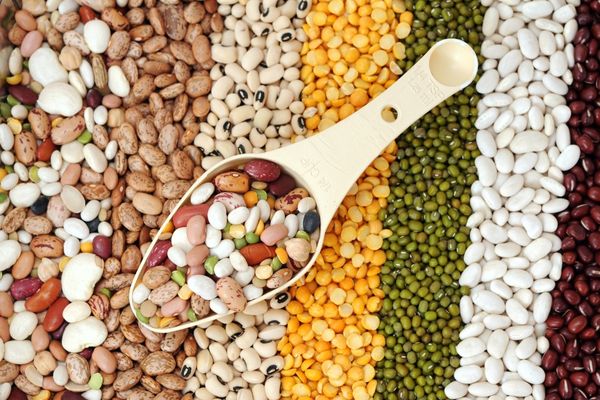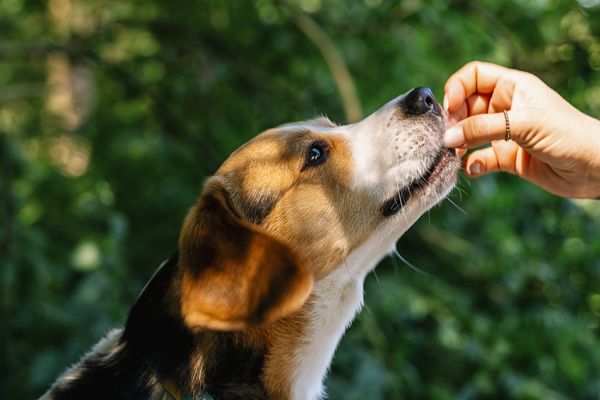These days, many cat and dog parents are introducing human-grade ingredients for their pets to try. From giving seafood to vegan alternatives, it’s a great way to expand your pup’s palate and add variety to his meals and treats. However, not all ingredients safe for humans are automatically good for canines. Before feeding your dog something new, it’s essential to get clearance from your veterinarian or consult with your pet nutritionist. Thinking of adding legumes or beans to your pooch’s diet? Read this article to find out:
- What are legumes and beans?
- Can dogs eat legumes and beans?
- Which legumes and beans are good for dogs?
- How should you feed your dog legumes or beans for the first time?
What are legumes and beans?
Legumes and beans both fall under the flowering plant family called Fabaceae or Leguminosae. Commonly known as the bean, legume, or pea family, these agricultural plants are grown worldwide, but not all cultivated types are edible. In some countries, some varieties are also used for horticultural, medicinal, cosmetic, and ornamental purposes.
A legume is considered to be an entire plant that bears fruit inside a pod. Meanwhile, the seeds taken from particular plants are called beans. All beans and pulses fall under the legume category. On the other hand, not all legumes are considered as beans since legumes have other parts. Besides the seeds, they also have pods, leaves, and stems.
Eating beans and legumes can benefit humans since they’re packed with dietary fiber, plant-derived protein, iron, folate, potassium, phosphorus, as well as polyunsaturated and monounsaturated fatty acids. They have low glycemic index, so they do not cause spikes in blood sugar levels. Plus, they aid in weight loss by helping people feel full for longer periods of time.
Can dogs eat legumes and beans?
Just like humans, dogs are categorised as omnivores. Omnivores are creatures that can eat both plant-based and animal-based matter. When eaten, these food sources are digested and converted into energy and nutrients. Carbohydrates, protein, fat, vitamins, minerals, and fiber are just some of the nutrients omnivores can get from eating a healthy mix of meat, fruits, and vegetables.
Given the fact that legumes and beans are both plants, it is safe to say that it is generally safe for dogs to eat them. Nevertheless, it is important to note that the amount given will vary based on the type of plant. Your dog’s age, size, weight, activities, and pre-existing health conditions should also be considered. This is because certain types of food may trigger intolerances or allergies and even aggravate illnesses.
TIP: Read up on our food guides for growing puppies and senior dogs. They’re required to eat specific food to help them meet all their nutritional needs.
Speak with your veterinarian if you’re keen on letting your dog try legumes and beans. He will be able to recommend how much and how often it should be given alongside your dog’s regular meals. Remember that his main food sources should consist of “complete and balanced nutrition” to guarantee they have the right mix of nutrients fit for his needs.

Which legumes and beans are good for dogs?
Check out this list of beans and legumes to discover if they can be eaten by your pooch:
Black beans
Containing vitamins C and K, black beans can be eaten by dogs in moderation. When prepared and given correctly, these dark-coloured pulses can help regulate blood sugar, burn fat, and strengthen his immune system.
Chickpeas
Also known as garbanzo beans, chickpeas can appear in different colours such as green, beige, red, and black. They can be given to your pet as long as they are cleaned and cooked without any seasonings.
Though this legume is the main ingredient for hummus, the dish should never be given to dogs because it contains potentially harmful ingredients. Lemon and garlic are two raw ingredients to watch out for.
Edamame
Only give your dog plainly cooked edamame, which is a type of immature soybean. The pulses should be taken out of the tough pod and crushed to prevent choking. Never give salted edamame and frozen ones mixed with other vegetables as some ingredients are potentially toxic for dogs. As for the pods, avoid giving them to your canine pet since they are tough to chew, swallow, and digest.
Great northern beans
Originating in Peru, great northern beans contain minerals such as folate, phosphorus, and manganese that are good for dogs. These white beans are commonly used in stews, soups, and casseroles due to their delicate flavour. However, the beans found in these dishes should never be given to your canine pet.
Kidney beans
Kidney beans are often included in spicy stews and soups, but this type of beans will only benefit dogs if they are cooked and served plainly. Raw kidney beans should not be given to your pet because they contain high levels of phytohaemagglutinin. This type of lectin causes digestive problems such as nausea, upset stomach, vomiting, and diarrhea.
Lentils
The right amount of cooked lentils can provide nutrients such as fiber, protein, and iron to your dog. Too much of these edible seeds, on the other hand, may cause flatulence and loose stools.
Lima beans
Also known as wax or butter beans, lima beans are edible, green-colored pulses that can be helpful for dogs. They are rich in fiber, high in plant-derived protein, and low in fat. Cooked lima beans can help aid digestion and balance blood sugar levels.
Lupin beans
Available in bitter and sweet varieties, lupini or lupin beans are gaining popularity as a cheap alternative to soy. But remember, dogs can only eat plainly cooked beans and never its brined version. The sodium content found in brined lupin beans will most likely cause health complications.
Navy beans
These small, white, oval-shaped seeds are used for many dishes including soups, pies, and chilis. When served correctly, navy beans contain antioxidants that can help slow down cell damage from free radicals.
Peanuts
Because of its name, peanuts are often mistaken as nuts. But in reality, they are actually members of the pea family. Only limited quantities should be given to dogs since overfeeding may lead to pancreatitis. Plus, the edible seeds should only be offered if they have been plainly cooked and removed from the hard shells.
Peas
Peas are commonly used as an ingredient for dog food since they contain vitamins A, B, and K, folate, and potassium. The three types of peas are garden peas (also known as green peas, English peas, and sweet peas), snap peas, and snow peas, which can all be occasionally eaten by canine pets.
Only offer cooked and unflavoured peas once in a while as it may cause digestive issues. The peas’ tough, outer shell should be removed as it may cause choking. In addition, dogs with existing kidney conditions should not be fed peas as the compound purine can aggravate these ailments.
Soybeans
Products such as soy protein, soy milk, and tofu come from soybeans. These contain the highest level of plant-derived protein compared to other beans. Some canines may be allergic to soy, so it’s best to seek your vet’s advice before integrating it in his diet.

How should you feed your dog legumes or beans for the first time?
Always give new food to your dog with caution. Follow your vet’s recommendation, and go with fresh and unseasoned sources. Clean and soak the plant as needed, and cook it until it is tender. Let your pooch try one mashed piece, and observe his body for reactions over the next few hours. If it agrees with him, you can follow your vet’s serving size and watch as your dog eats it.
Also, consider the amount of legumes and beans you feed your dog as treats. These should not go beyond 10% of your pooch’s daily calories or replace his regular meals. When preparing these treats, never season them with ingredients such as salt, sugar, garlic, and onion. Most of these seasonings will instantly harm your canine pet’s body and damage his organs. Similarly, you shouldn’t give him canned, refried, and baked beans or legumes as these are high in artificial flavourings and preservatives.
Aside from legumes and beans, go through our comprehensive “dog food” category to discover which human food your pooch can and cannot consume. You can also learn about which types of food cats can safely eat here.
Leave a comment
Your email address will not be published. All fields are required.